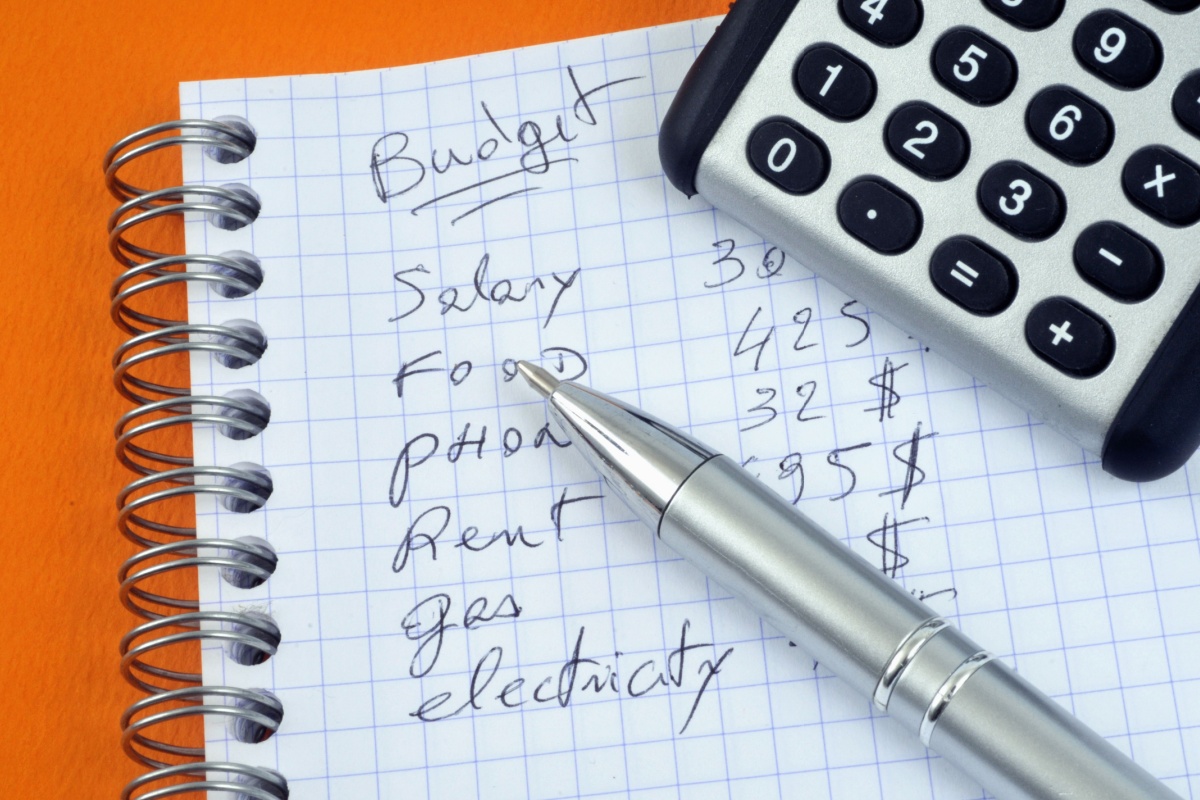Smart Ways to Stay on Budget While Shopping for Must-Have Items
It’s easy to lose track of your spending while shopping, even when you’re just out for the basics.
Must-have items aren’t luxuries. They’re the everyday things we rely on: groceries, cleaning supplies, toiletries, and school or work essentials. The good news? You don’t have to sacrifice what you need to stay on budget. A recent study from the University of Virginia found that people who set more ambitious budgets ended up spending about 22% less than those who didn’t budget at all.
With a few practical habits, some planning, and the right tools, you can stay in control and still get what matters most. Let me show you how.
Understanding Your Budget Limits
When shopping for must-haves, take a step back and look at your numbers. Knowing your flexible limit helps you ask: Do I have room for this today? Or will this push me over?
Start with your monthly income and subtract your fixed expenses. That includes your rent or mortgage, utilities, loan payments, insurance, and anything else that doesn’t change much from month to month. What you’re left with is your flexible spending money, the portion you can use for extras, personal items, and the fun stuff.
Let’s walk through two examples:
|
Person |
Monthly Take-Home Pay |
Fixed Expenses |
Leftover Amount |
|
Alex: Full-time worker supporting a household |
$4,200 |
$3,500 |
$700 |
|
Sam: University student with a part-time job |
$1,800 |
$950 |
$850 |
So, what do you do with the leftover amount? That’s where a spending strategy like the 50/30/20 rule can help.
Try the 50/30/20 Rule
The 50/30/20 rule is a simple guideline:
- 50% of your income goes to needs
- 30% goes to want
- 20% goes to savings or debt repayment
This isn’t a strict rule, but it helps you get a feel for how to divide your money. Here’s how it would look for Alex and Sam:
|
Category |
Alex |
Sam |
|
50% Needs |
$2,100 (rent, utilities, groceries, insurance, debt payments) |
$900 (share rent, groceries, public transit, student loan payments) |
|
30% Wants |
$1,260 (takeout, streaming, small luxuries) |
$540 (eating out, shopping, hobbies) |
|
20% Savings |
$840 (emergency fund, retirement) |
$360 (savings account) |
Even if your numbers don’t fit this exact mold, breaking things down this way can reduce decision fatigue. You don’t need to analyze every purchase. Just ask, “Does this fit into my 30% wants bucket?” That one question can keep you from impulse buying or dipping into your savings.
In fact, studies have shown that giving each dollar a job, even if it’s a rough estimate, can help reduce stress around money. When you know you’ve already planned for fun purchases, you’re less likely to overspend out of guilt or confusion.
Keep Irregular Costs in Mind
Some months just cost more than others. Maybe it’s back-to-school season, a small repair pops up, or you need to replace worn-out shoes. These aren’t regular expenses, but they’re also not surprises if you stop and think ahead.

Instead of treating these costs like emergencies, try setting aside a small buffer each month, whatever you can manage. Even putting away $20 or $30 can help cushion those little spikes in spending without throwing off your entire budget.
For example, if Sam usually spends $850 on flexible expenses, they might aim to only spend $800 most months and let that extra $50 build up. That way, when a one-off cost shows up, like a raincoat, an umbrella, or a college event fee, they’re covered without needing to reshuffle everything.
Break Down Your Budget by Category
Here’s where things get really practical. Alex has about $700 left after covering monthly fixed costs. While the 50/30/20 rule offers a helpful guideline, real-life budgets don’t always match it perfectly.
Let’s say Alex set aside $200 for shopping this month. They could break that down like this:
- $60 for toiletries
- $90 for clothes
- $50 for household items
This mini breakdown gives Alex a clear plan to follow while shopping. Having category limits makes it easier to stay on track when you’re tempted to grab something extra.
Planning Before You Shop
One of the easiest ways to stick to your budget is to plan before you spend. It doesn’t have to be complicated or time-consuming. A few simple habits can help you avoid impulse buying and make your money go further.
Make a Priority List
Start by jotting down what you plan to buy. Then take a moment to sort your list by priority. Not everything needs to be bought at once. Some items can wait, others can be swapped for lower-cost options, and a few may be worth paying full price now.
As you shop, run each item through a quick priority check. Ask yourself:
- Is this something I’ll use this week or next?
- Can I get a more affordable version now?
- Can it wait until the next trip?
Say you’re shopping for household items. You need shampoo, and your usual brand costs $10, but the store brand is $5 and gets the job done. You might decide to go with the store brand this time and put that extra $5 toward another must-have item.
Research Prices Ahead of Time
If you walk into a store (or open your favorite app) without knowing what something usually costs, it’s easy to overpay. Spend a few minutes comparing prices online so you know the average range.
Let’s say you’re looking for a decent vacuum cleaner. A quick search will show you that reliable models range between $100 and $250, depending on features. Now you have a benchmark and a better sense of when something’s actually a good deal.
Set Spending Limits by Category
If your monthly budget for household items is $150, split that into clear categories before you shop. For example, you might allocate $50 for cleaning supplies, $60 for kitchen tools or replacements, and $40 for decor or extras.

Having these caps in place helps you stay disciplined in each area rather than spending most of your budget in one go.
Tools and Resources That Can Help
Why budget manually or rely on memory to track your spending when there are plenty of free or low-cost tools that can help you stay on top of your finances?
Budgeting Apps
With apps like Goodbudget and YNAB, you can track every dollar in and out. YNAB connects directly to your bank account so you can monitor spending in real time. Goodbudget, on the other hand, uses the envelope system, which helps you divide your money by category.
YNAB offers a 34-day trial. Goodbudget has a free version as well as a paid plan.
It’s worth noting that the popular free budgeting app Mint no longer exists. Intuit shut it down in March of 2024. Mint users are now directed to Credit Karma, though that service does not provide the same budgeting features available for free through Mint.
Price Comparison Tools
Other than researching prices ahead of time before buying anything online, take a moment to compare prices. Websites like Google Shopping and PriceGrabber, or browser extensions like Honey, can instantly show you where to get the same item for less.
Honey and Google Shopping also let you set alerts so you’ll be notified when a product drops in price. That way, you don’t have to pay more than you have to for your must-haves.
Loyalty Programs and Rewards
If you frequently shop at the same stores, sign up for their loyalty programs. They often offer exclusive discounts, early access to sales, or points you can redeem for future purchases. Some grocery stores even offer digital coupons based on your purchase history.
However, be cautious not to spend more than you would without rewards. The goal is to save on what you already planned to buy and not to justify extra purchases.
Coupons and Discount Alerts
Use apps and websites like Rakuten, Ibotta, or RetailMeNot, and CouponFollow to find cashback deals and promo codes. You can also subscribe to your favorite brands’ email lists if you’re comfortable with occasional promotional emails. Many offer a welcome discount just for signing up.

When shopping in-store, don’t forget about good old-fashioned paper coupons. You can often combine them with digital offers for extra savings.
Smart Shopping Strategies
Being budget-conscious and saving money while shopping doesn’t mean you have to miss out. It just means getting more intentional about how and when you spend your money. A few smart and affordable shopping strategies can help you stretch your dollars without feeling restricted.
Time Your Purchases
Retailers follow patterns, and once you know them, you can save some serious money. For example, if you need new clothes, clothing clearance takes place in January and July. Late August is great for buying school and office supplies. And let’s not forget about Black Friday and Cyber Monday. These two dates offer the best discounts on big-ticket items like electronics, appliances, and other household goods.
Buy in Bulk (When it Makes Sense)
While knowing what to buy is important, it is also important to know how much to buy. Buying larger quantities can be one of the best ways to save on essentials in the long run, but only if you actually use what you buy.
This works well for non-perishable items like toilet paper, detergent, canned goods, freezer-friendly foods, and household basics you go through regularly.
Always ask yourself: Do I have storage space? Will I use it before it expires? If the answer is yes to both, it’s probably a good move.
Consider Refurbished or Gently Used Items
Not everything has to be brand new. You’ll be surprised by how you can find quality items for much less by shopping secondhand or refurbished. For electronics, websites like Best Buy Outlet, Amazon Renewed, and Back Market offer refurbished devices from certified sellers, many of which come with warranties and have been professionally tested.
When it comes to furniture, tools, and kitchenware, platforms like Facebook Marketplace, OfferUp, and local thrift shops can be great sources for affordable finds in good condition.
Kids’ clothes and toys are also great to buy secondhand, especially since children grow out of things quickly. Stores like Once Upon a Child and Kid to Kid offer gently used items at a lower price. You can also browse online platforms like ThredUp and Poshmark for a wide range of secondhand children’s items.
Mindset Tips to Stay Within Budget
Even with a clear plan and the right tools, it’s easy to overspend if you’re not thinking intentionally about your choices. The good news is that with small shifts in how you approach shopping, you can stay focused, avoid regret, and feel more confident about where your money goes.
Stick to Your Shopping List
This might sound basic, but it works. A shopping list for budget planning keeps you focused on what you actually need. Without one, it’s easy to fall for limited-time offers, flashy displays, or things you think you might need later.
Take a few minutes before you shop to list out exactly what you’re looking for. If something isn’t on the list, save it for another time. Think of your list as something that helps you stay in control, not a restriction.
Use a Cooling-Off Period
If you find a must-have that wasn’t part of your plan, give yourself a little time before deciding. This pause helps you avoid emotional spending and gives you space to decide if the item really fits your needs or budget.
For small items, wait at least 24 hours. For larger purchases over $100, wait 48 to 72 hours. Often, you’ll realize you don’t need the item as much as you thought, or you might find a better option elsewhere.
Practice Mindful Spending Habits
Before you buy anything, take a moment and ask yourself: Is this something I truly need? Will I still want this next week? Am I buying this because I’m stressed or need a mood boost?
The last question ties into something big: every purchase has a trade-off. Buying something small today might mean putting off something more meaningful later. Spending $40 on impulse could mean waiting longer to fix your bike, pay off a bill, or go out with friends this weekend.
3 Common Mistakes to Avoid
Even the most budget-conscious shoppers sometimes make choices that lead to overspending. Being aware of these common mistakes can help you avoid them and make better use of your money.
1. Giving Up When You Slip Up
So you went over budget this month. Many people feel discouraged after one setback and throw the whole system out. But small missteps are normal, and they’re actually a chance to make your budget work better next time.
Look for patterns. What threw your budget off? Was it eating out more, a specific event, or just a busy month? If a certain category keeps going over, increase that budget line next month and lower another. Budgets should shift as your life does.
2. Relying Too Much on “Buy Now, Pay Later”
Buy Now, Pay Later (BNPL) options like Afterpay and Klarna make it easier to buy. But they also make it easier to overspend. You feel the fun of buying now, but don’t feel the cost until later. Even without interest, juggling multiple payments can strain your budget and lead to late fees or overdrafts.
If you use these services regularly, it’s worth asking whether each purchase fits comfortably into your monthly budget. If not, it might be better to wait and save up.
3. Letting Deals Control Your Decisions
Getting a discount feels good, but it shouldn’t be the reason you buy something. A 40% off sign might catch your eye, but if you weren’t planning to buy the item in the first place, it’s not really a deal; it’s just an unexpected expense.
Before acting on a promotion, pause and ask: Would I want this if it were full price? If the answer is no, it’s probably safe to walk away.
Sum-Up
Making better financial choices starts with a few simple habits. When you take time to plan, use the right tools, and stay aware of your spending, it becomes easier to stick to your budget without feeling restricted. The goal is not to get everything right at once, but to build steady progress every time you shop.





